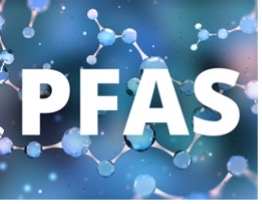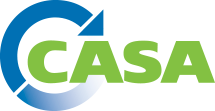House Committees Markup Reconciliation Proposals
Last week, House Democrats met their self-imposed deadline for congressional committees to markup and report out each of their portions of the overall $3.5 trillion dollar reconciliation package. The next step in the process will be for the Committee on Budget to take all individual committee proposals and fashion them into a single package and vote on the reconciliation package by the end of the month. Once the House passes the package, it will be sent to the Senate for consideration. However, it is still unclear if Democrats will have the necessary votes to pass the package, as Senators Joe Manchin (D-WV) and Kyrsten Sinema (D-AZ) have already voiced uncertainty about the package’s high price tag. For the clean water sector, the House committees provided limited funding increases to certain financing assistance programs that address climate resiliency and environmental justice concerns. The below summarizes the key provisions.
In addition to developing a reconciliation package, the House is also expected to vote on a continuing resolution (CR) bill this week to avert a government shutdown on October 1 when the new fiscal year begins. The CR would maintain current fiscal year (FY) 2021 spending levels through likely mid-December, as congressional appropriators continue to draft FY2022 spending bills. At the time of this writing, text of the CR has not been released. As a result, this means that the U.S. Environmental Protection Agency’s (USEPA) funding assistance programs for the clean water sector will see a continuation of current funding levels. A review of FY2021 funding levels for USEPA programs can be accessed here.
Selected Summary of House Committee Reconciliation Clean Water Provisions
House Committee on Transportation and Infrastructure
- $125 million for alternative water source projects to remain available until expended.
- $1 billion for sewer overflow and stormwater municipal grants, and an additional $1 billion for sewer overflow and stormwater municipal grants for financially distressed communities. Funding is to support activities that maximize the avoidance, minimization, or mitigation of climate change impacts.
- Eligible activities include the implementation of technologies to recover and reuse energy produced in the treatment of wastewater.
- $5 million to support EPA’s Clean Water Needs Survey
- $495 million to remain available until expended to provide technical assistance to rural, small, Tribal, and economically disadvantaged municipalities. Funding may also be used to support manpower development and training and retraining of workforce employees of POTWs.
House Committee on Energy and Commerce
- $500 million for grants to States and Indian Tribes to assist low-income households, to provide funds “to owners or operators of public water systems or treatment works to reduce arrearages of and rates charged to such households for such services.” Allotments will be based on:
- percentage of households with income equal to or less than 150 percent of the Federal poverty line; or
- percentage of households that spend more than 30 percent of monthly income on housing.
- $100 million for grants for the monitoring of unregulated contaminants
House Committee on Natural Resources
- $500 million for the U.S. Bureau of Reclamation’s (USBR) emergency drought relief
- $75 million for the U.S. Geological Survey’s water resources research and technology institutes
- $50 million for USBR’s snow water supply forecasting
- $50 million for USBR’s water technology investment
- $250 million for USBR’s aquatic ecosystem restoration
- $100 million for large-scale water reuse projects
- $150 million to support efficient and effective NEPA implementation reviews
- $9.5 billion to the National Oceanic and Atmospheric Administration to support coastal and Great Lakes restoration and technical assistance
- $500 million to support to address coastal hazards and sea-level rise events and impacts
House Committee on Ways and Means
- Restoration of the Build America Bond financing tool by providing a maximum 35% cash subsidy for bond interest charges to offset the higher carrying costs of bonds that are not tax-exempt but which cost less to issue;
- Restoration of Advanced Refundings of bonds to allow public agencies to leverage lower borrowing rates prior to a period of time when an existing bond can be called or refinanced; and
- Unrestricted volume use of private activity bonds for water and wastewater projects.
USEPA Publishes Preliminary Plan For Industrial PFAS Wastewater Discharges
 The U.S. Environmental Protection Agency (USEPA) has released its Preliminary Effluent Guidelines Program Plan 15 (plan) that identifies opportunities for how to better protect public health and the environment by regulating PFAS-contaminated wastewater discharges from PFAS-manufacturing industries. The plan outlines that USEPA will initiate three new rulemakings for revised effluent limitation guidelines for industrial discharges. Specifically, the plan will take the following actions:
The U.S. Environmental Protection Agency (USEPA) has released its Preliminary Effluent Guidelines Program Plan 15 (plan) that identifies opportunities for how to better protect public health and the environment by regulating PFAS-contaminated wastewater discharges from PFAS-manufacturing industries. The plan outlines that USEPA will initiate three new rulemakings for revised effluent limitation guidelines for industrial discharges. Specifically, the plan will take the following actions:
- The beginning of a rulemaking to revise limitations for the Organic Chemicals, Plastics, and Synthetic Fibers (OCPSF) category to address the discharge of per- and polyfluoroalkyl substances (PFAS) from facilities that manufacture PFAS.
- The initiation of a rulemaking to revise limitations for the Metal Finishing category to address PFAS discharges from chromium plating operations.
- The completion of its detailed study of the Meat and Poultry Products category and initiation of a rulemaking to revise the existing discharge standards for the industry.
- The intention to publish a proposed Supplemental Rulemaking for the Steam Electric Power Generating category.
- The initiation of detailed studies of PFAS discharges from the Landfills and Textile Mills categories.
The purpose of the preliminary plans is to identify any new or existing industrial categories selected for effluent limitation guidelines or pretreatment standards rulemakings and provide a schedule for such rulemakings. The Agency is soliciting public comments on its plan. Public comments must be submitted within 30 days of the plan’s publication on the federal register. USEPA provides instructions for how to submit public comments here.
USEPA Releases Draft CWA Methods Testing For PFAS
 The U.S. Environmental Protection Agency’s Office of Water has published its draft Method 1633 for Clean Water Act analytical testing methods for PFAS compounds in wastewater and other environmental media. The draft method is the product of a partnership between the Office of Water and the Department of Defense Strategic Environmental Research and Development Program to develop a “single-laboratory validated method to test for 40 PFAS compounds in wastewater, surface water, groundwater, soil, biosolids, sediment, landfill leachate, and fish tissue” to provide consistent quality control procedures for these chemicals under the Clean Water Act. Typically, when USEPA releases a draft method, it also publishes an accompanying single-laboratory validation report. The Agency has stated that due to the high volume of public and stakeholder requests, it is still drafting the report.
The U.S. Environmental Protection Agency’s Office of Water has published its draft Method 1633 for Clean Water Act analytical testing methods for PFAS compounds in wastewater and other environmental media. The draft method is the product of a partnership between the Office of Water and the Department of Defense Strategic Environmental Research and Development Program to develop a “single-laboratory validated method to test for 40 PFAS compounds in wastewater, surface water, groundwater, soil, biosolids, sediment, landfill leachate, and fish tissue” to provide consistent quality control procedures for these chemicals under the Clean Water Act. Typically, when USEPA releases a draft method, it also publishes an accompanying single-laboratory validation report. The Agency has stated that due to the high volume of public and stakeholder requests, it is still drafting the report.
The draft method may be used in various permit applications, including the National Pollutant Discharge Elimination System (NPDES) permits. Since the method is still in draft form, it is not a federally mandated requirement under Clean Water Act compliance monitoring. However, until USEPA finishes its procedural process of promulgating the method into a final rulemaking, the method may be used now in individual permits.




 @CASA_CleanWater
@CASA_CleanWater